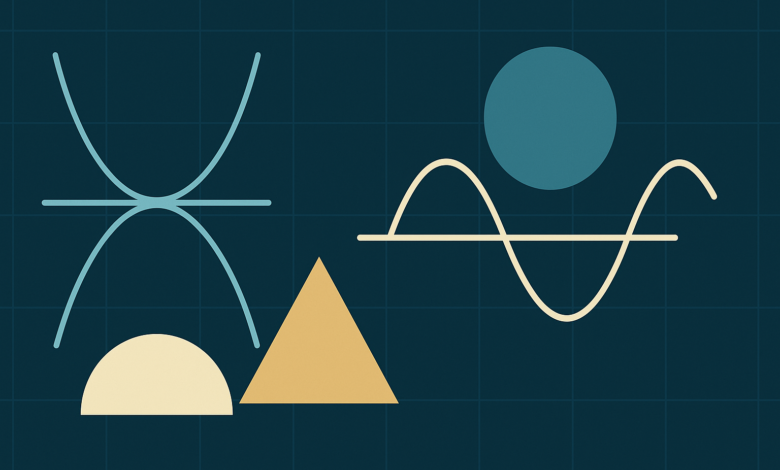Gauth-Math: Practical 2025 Playbook for Real Learning

Highlights
- Intent-first use: treat gauth-math as a coach, not a shortcut.
- Repeatable process: the 4R Routine turns answers into memory in minutes.
- Error control: quick checks to catch symbol misreads and algebra slips.
- Topic sheets: mini playbooks for Algebra, Geometry, Trig, Calculus, and Stats.
What Is gauth-math?
gauth-math is a math helper that accepts a typed or scanned problem and returns a step-by-step solution. It’s ideal for quick feedback, diagnosing where you got stuck, and learning alternative methods. The big win comes when you compare each step to your own notes and then solve a similar problem unaided.
The 4R Routine: From Answer to Mastery
Use this repeatable workflow every time you consult gauth-math:
- Read the recognized problem. Confirm symbols, exponents, and units.
- Reason through each step. Write the rule used (distribute, chain rule, similarity, etc.).
- Replicate the same problem on blank paper without looking.
- Recombine numbers to create a “twin” problem; solve it to prove you learned the pattern.
Most students can complete a full 4R cycle in 6–10 minutes per question—fast enough for homework and test prep.
Clean Scan, Correct Steps
- Write the full problem, including what to solve for.
- Place the page flat; avoid shadows and cropped symbols.
- Use a dark pen for clarity; keep equal signs aligned.
- If recognition looks off, type the expression to remove ambiguity.
Mini Playbooks by Topic
Algebra
Common tasks: linear equations, systems, quadratics, rational expressions.
Pattern cues: isolate variables, factor before expand, watch domain limits for roots/fractions.
Quick check: plug the solution back into the original to verify both sides match.
Geometry
Common tasks: triangle similarity, congruence, circle theorems, coordinate proofs.
Pattern cues: mark given angles/lengths; translate diagrams into equations.
Quick check: units and scale—ensure results make geometric sense.
Trigonometry
Common tasks: identities, equations, graphs, law of sines/cosines.
Pattern cues: convert to one trig function when possible; use Pythagorean identities.
Quick check: angle range and quadrant signs.
Calculus
Common tasks: limits, derivatives (product/quotient/chain), basic integrals and u-sub.
Pattern cues: name the rule each time; track constants and bounds.
Quick check: differentiate your antiderivative to confirm the integrand.
Statistics
Common tasks: mean/median, standard deviation, z-scores, simple probability.
Pattern cues: clearly label sample vs. population formulas.
Quick check: sanity-check magnitude (probabilities between 0 and 1, units of variance).
Frequent Mistakes (and Fast Fixes)
- Only copying the final answer. Fix: annotate every step with the rule used.
- Ignoring problem context. Fix: state what the question asks in one sentence before solving.
- Messy scans. Fix: reshoot with better light or type the expression.
- Practicing identical numbers only. Fix: make a “twin” with small changes to confirm the pattern.
Accuracy & Quality Control
- Estimate first. Rough magnitude check before trusting the exact number.
- Cross-method. Try an alternate method (e.g., quadratic formula vs. factoring) when steps look odd.
- Boundary watch. Check domains, absolute values, and extraneous solutions.
- Unit discipline. Track units in geometry and applied problems.
10-Day Study Sprint with gauth-math
| Day | Focus | What to Do | Win Condition |
|---|---|---|---|
| 1–2 | Clean scans + 4R | 5 problems/day using the 4R Routine | Replicate steps unaided for 4/5 problems |
| 3–4 | Algebra fluency | Linear, systems, quadratics | Two methods for one quadratic type |
| 5–6 | Geometry reasoning | Similarity + circle theorems | Correct theorem labels on each step |
| 7 | Trig identities | Rewrite into single function | Three correct identity transforms |
| 8 | Calculus rules | Chain/product/quotient drills | Name the rule every time |
| 9 | Statistics | z-scores + SD practice | Right formula chosen 100% of time |
| 10 | Mixed review | Timed set of 12 problems | 80%+ accuracy with notes closed |
Academic Integrity & Smart Use
Use gauth-math to learn. For graded work, follow your teacher’s rules. Build your own steps with the 4R Routine so you can show work confidently during tests.
FAQs
Is gauth-math accurate enough for homework?
It’s reliable on standard problems when the scan is clear. Always verify each step and run a quick magnitude check.
Can I use gauth-math for word problems?
Yes—rewrite the situation into equations first, then scan or type those equations to reduce recognition errors.
How do I stop relying on the app?
Close it after reading steps, then solve from scratch and complete a “twin” problem. That two-step habit breaks dependence quickly.
What if the solution contradicts my teacher’s method?
Different valid methods can exist. Rework using your class technique and compare results; choose the approach your course expects.
Bottom Line
gauth-math becomes a real advantage when you combine clean inputs, step annotations, and the 4R Routine. Use it to check, learn, and then prove mastery without assistance. That’s how you earn durable results—and better grades.





